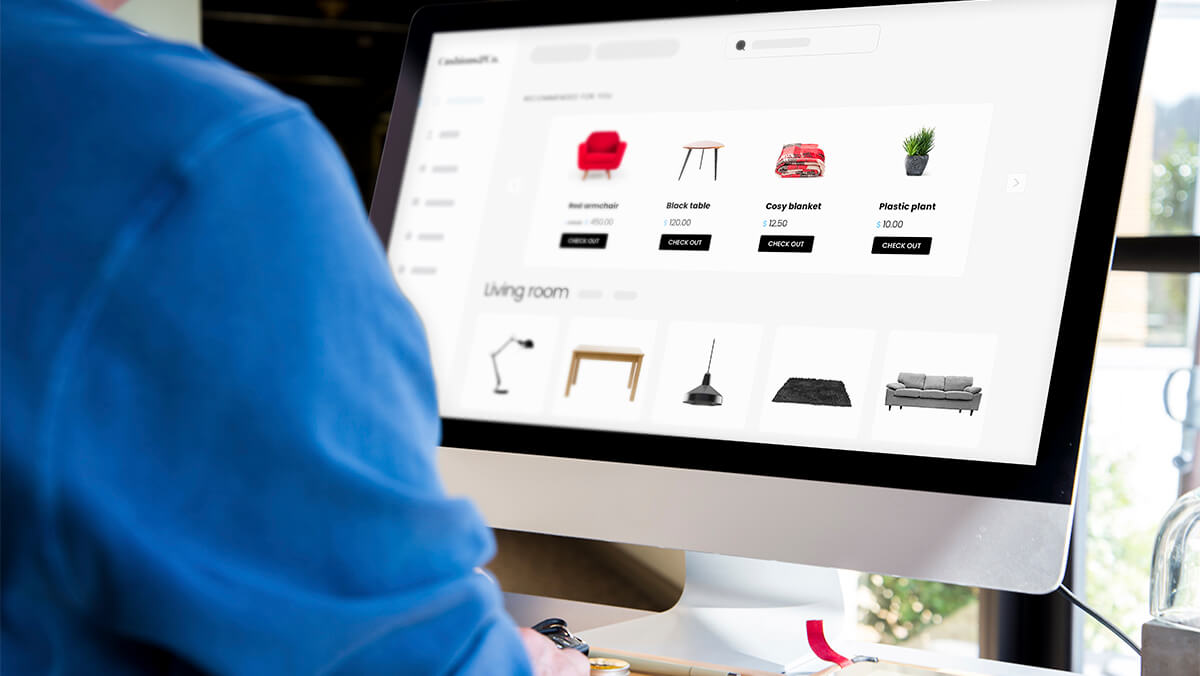Benefit from product recommendations in your online store

It stands to reason that if you want your customers to buy more products in your online store, you have to recommend them. Product recommendations can be a source of more orders in your store at a relatively low cost. Still, many stores don’t exploit this technique as effectively as they could. In this post, we will show you how to use product recommendations in your e-commerce business and what results you can expect.
Product recommendations are simply suggestions that should be displayed to your customers during different stages of the customer journey. There are at least two techniques that aim at increasing your profit by suggesting other products to people who are already interested in buying something from you. But let’s start with the beginning.
How product recommendations work
To introduce product recommendations in your store, you need a specific engine or platform that offers such a feature. The majority of product recommendation engines use machine learning (a subset of AI) so that they can improve the quality of their recommendations over time. This part is especially important; thanks to machine learning, the recommendation algorithm uses every customer and every product as training data and “learns itself” how to be better.
In essence, product recommendation engines do two things:
- They analyze the behavior of a given customer (what products they browse, what posts and sections on your website they read, what they have in their cart etc.) and frequently also other users with a similar profile (if two customers were interested in a gaming laptop and the customer A also purchased a gaming mouse as well, it is likely that the customer B will also be interested in the same mouse)
- They display product suggestions in different places of your website (that’s up to you where)
Here’s how it looks from the customer’s perspective: You enter the website and browse gaming laptops. Finally, you’ve found the perfect model. You add it to your cart and are ready to finish the order. But before you do that, you see the offer for a gaming mouse. “I could actually use that!” – you think almost automatically and add this product to your cart. No one needs to be convinced that this mechanism really works – we’ve all done that at some point, e.g., while waiting in line in a store.
TYPES OF PRODUCT RECOMMENDATION SYSTEMS
There are three basic forms of product recommendation systems:
- Content-based recommendation systems: They suggest similar items based on what a given person has previously searched for, viewed, bought, or rated positively
- Collaborative recommendation systems: They analyze the behavior of other users with similar profiles and interests and generate recommendations on that basis.
- Hybrid systems: They simply combine the previous two methods and take both the given user’s actions and other users’ preferences into account. It’s the most popular and effective form.
Where to put product suggestions in your online store
The short answer is wherever possible. Of course, you can’t flood your customers with product recommendations because that would be counterproductive. They can’t interrupt customers from doing what they want to do – find the product and purchase it as quickly as possible. Product suggestions should be a bit in the background instead of attacking your customers.
But where should they be located? You can think of placing them:
- On the main page or on category pages
- In the product tab
- In the cart section
- In the order summary or thank-you page
Here, we have to clarify one thing – people can decide to buy more products at different times. Some of them will even buy the product they need and then return to buy something else the next day! So, don’t rush your customers. Product suggestions have to be subtle and friendly, not aggressive.
Take a look at how Decathlon, a French sporting goods retailer, does that:
It’s a part of their product tabs. Decathlon uses two categories of recommendations:
- Frequently bought together (complementary products)
- Similar products (some of which are more expensive than the product currently viewed)
And this leads us to cross-selling and upselling.
CROSS-SELLING AND UPSELLING – TWO WAYS TO INCREASE AOV
AOV stands for average order value, and cross-selling and upselling are designed to help you close more deals and sell more (and more expensive) products to your customers. Cross-selling focuses on complementary products. In the example above, when a customer is interested in buying a snowboard, they will likely need boots, bindings, and a helmet, correct? So, your role as a considerate seller would be to recommend adding these products to the cart. That’s how cross-selling works.
And what about upselling? Suppose we have a customer interested in purchasing a 42″ TV. Why not 50″ or even 55″? The 55″ one is a bit pricier, but it offers so much better vision! And it looks better on the wall. That’s upselling – you try to offer a similar product that’s more expensive compared to the one your customer was initially interested in.
Here, we should also mention something called the decoy effect. The price is almost always relative. If one of the products is noticeably better (in our example, the 55″ TV) than the other – most customers will choose it, even if it costs a bit more (it shouldn’t be MUCH more expensive, though). The decoy effect uses this psychological fact. If you want to turn your customer’s attention to a specific product and sell it, show them another worse one.
According to Salesforce, purchases where a recommendation was clicked saw a 10% higher AOV, and the per-visit spend of a shopper who clicks a recommendation is five times higher.
Summary: How to make the most of product recommendations
Product recommendations undoubtedly work, and you should be vitally interested in implementing them in your online store. Find the best recommendation engine. Decide where to put product recommendations in your store – the product tab and the cart are the best places for them. And always analyze the efficiency of your recommendation engine. If the performance is not satisfying, perhaps some changes are necessary.
At iPresso, we have our own product recommendation solution! We call it recommendation frames, and since it’s quite a novelty in our offer, we invite you to watch this short video.
Additionally, we’d like to turn your attention to our feed manager. It enables you to create product recommendations based on different criteria. This way, you can more effectively reach people who might visit your store again or buy more products.
And if you run your store on the PrestaShop platform, we have good news! iPresso can be fully integrated with this platform. This way, you get access to product recommendations but also to the upselling and cross-selling functionality! If you need more, start a free trial or reach out to our team!



